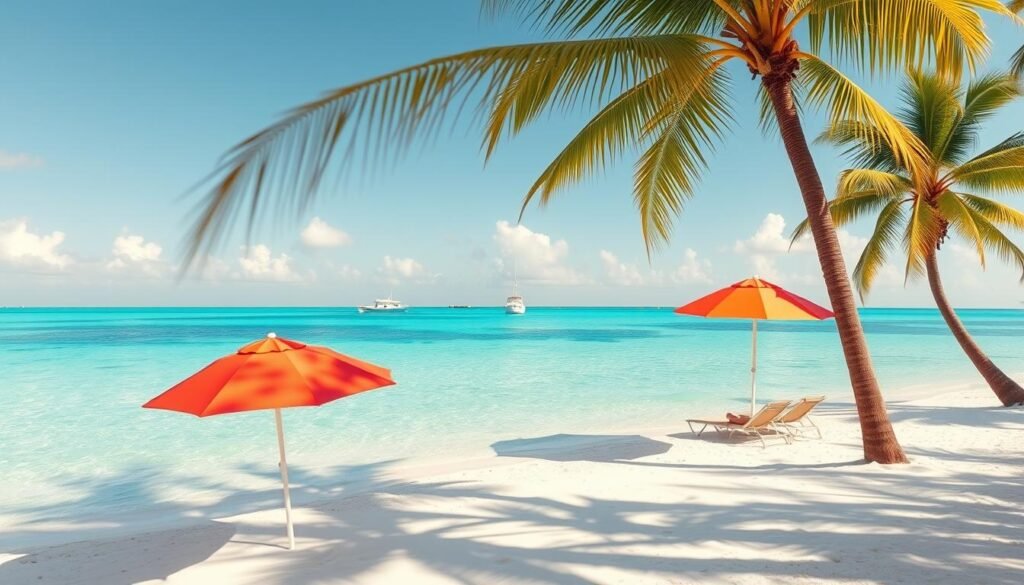Did you know water visibility here can reach up to 200 feet? That kind of clarity shapes how I plan a trip. It tells me when snorkeling and diving will feel unforgettable.
I think about three things first: weather, crowds, and price. Winter brings great sun and bigger crowds. Late spring and early summer give a quieter vibe and decent rates.
Hurricane season runs June through November, so I watch forecasts and hotel policies before I book. Sea temps dip in winter to the low 70s, so I pack a thin wetsuit for longer swims.
Across the islands, festivals like Junkanoo and spring regattas shape the mood and costs. My goal in this guide is simple: match an ideal time with what I want from a vacation.
Key Takeaways
- Clear waters and warm seas make many months great for water sports.
- Peak season means prime weather but larger crowds and higher rates.
- Shoulder months often offer balance: good weather and fewer people.
- Hurricane season requires flexible plans and checking hotel policies.
- Festivals can be a highlight but may raise prices and demand.
Why timing matters for your Bahamas getaway
When I plan a getaway, the calendar shapes almost every choice I make. I line up my goals—sunny days, lower crowds, or lower prices—against months that match them.
Weather and crowd patterns change the vibe. High season (December–mid-April) brings reliable sun but more tourists during holidays and spring break. Low season (August–November) usually offers the deepest savings.
I keep in mind that rain is often brief and that hurricane season (June–November) gives some advance warning. Many hotels include cancellation policies that protect my travel investment.
- Match priorities: pick months that favor beach days, quiet afternoons, or lower costs.
- Plan buffers: schedule flexible outdoor days in case of brief showers.
- Weigh risk: consider how comfortable you are with hurricane-season uncertainty and policy protections.
| Priority | Typical Months | What I expect |
|---|---|---|
| Sunny beach days | Dec–Apr | Great weather, more visitors |
| Lower prices | Aug–Nov | Deals, some rain, hurricane caution |
| Balance | Apr–Jul | Fewer tourists, warmer seas |
Seasonality at a glance: high, shoulder, and low season
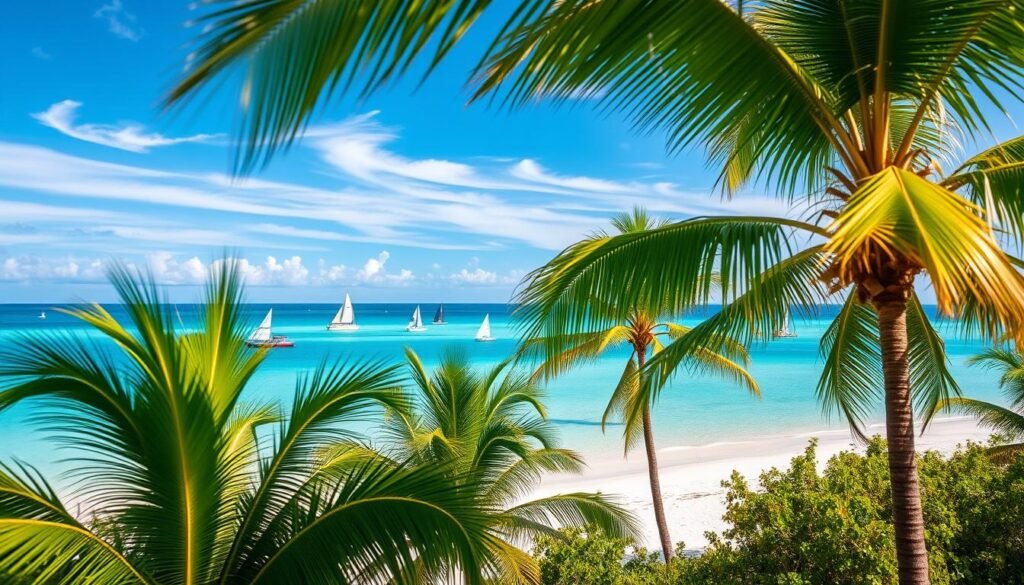
I map the year into three clear seasons so planning feels straightforward. This quick view helps me weigh weather, crowds, and prices before I dig deeper.
High season (December to mid-April)
What I get: drier, sunny days and lively events. Holidays and festivals make this a festive stretch.
Trade-off: higher demand and lines at popular spots during peak times.
Shoulder season (late April to July)
This season blends warm waters and fewer visitors. Late spring into early summer brings warmer sea temps and excellent snorkeling.
Carnival (Whit Monday) in May/June can spike attendance even in shoulder months.
Low season (August to November)
I find the deepest value here. Many resorts lower rates, and some properties schedule renovations.
Hurricane risk peaks around August–October, with broader season notes from June–November, so I favor flexible bookings and travel insurance.
- Quick use: I define each season so I can spot what to expect fast.
- Decision: I shortlist months, then match activities and deals.
| Season | Typical months | What I expect |
|---|---|---|
| High | Dec–mid-Apr | Sunny, busy, lively events |
| Shoulder | Late Apr–Jul | Warmer seas, fewer visitors |
| Low | Aug–Nov | Lower rates, hurricane caution |
“I use this overview to shortlist target months before diving into activities and events.”
Use this snapshot as a starting line. From here I pick the months that match my priorities and plan travel accordingly to find the best time visit with confidence.
Weather and water: what I actually feel on the islands
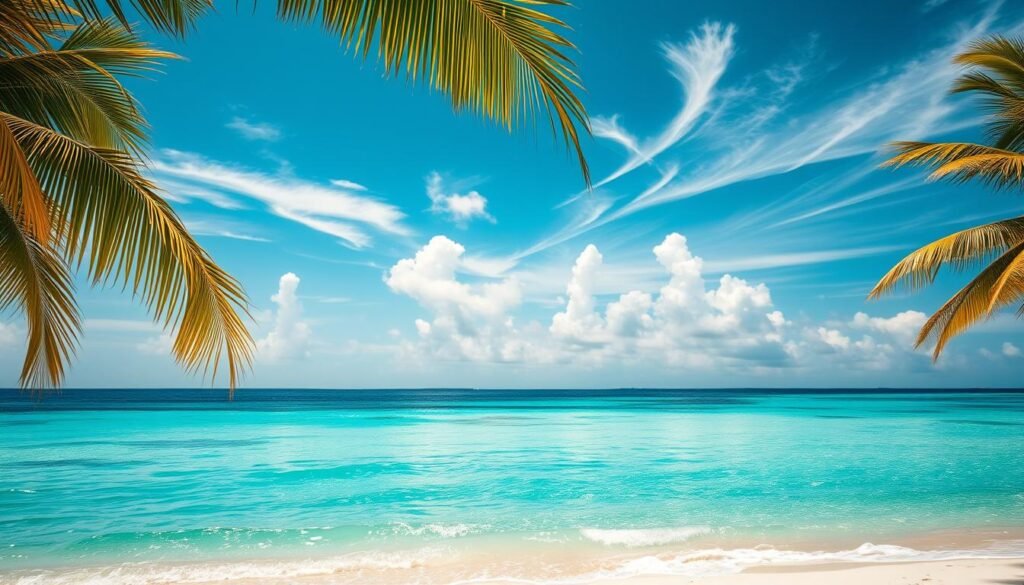
Weather here is honest and easy to read. Mornings in winter feel pleasantly mild and evenings can turn a bit Caribbean chilly, so I pack a light layer for breezy nights.
Temperatures and daily rhythm
Winter lows hover around 70°F while summer climbs into the 80–90°F range. The sea breeze softens heat, making beach hours inviting most of the day.
Rain and how I plan around it
Rain usually comes in quick bursts. I schedule a lunch or a museum stop during showers, then get back to sand when the sun returns.
Sea temps, visibility, and comfort
Water stays warm year-round; January–February sea temps sit near 72–75°F, so a short wetsuit helps for long snorkels. Visibility can reach up to 200 feet, which makes reef colors pop on calm mornings.
| Season | Air (°F) | Sea (°F) | Sun hours (avg) |
|---|---|---|---|
| Winter | ~70s low | 72–75 | 6.9 (Dec) |
| Spring | Warm, rising | Mid 70s+ | 9.2 (Apr) |
| Summer | 80–90 | Warm | Long bright days |
Hurricane season (June-November): how I plan smart and stay flexible
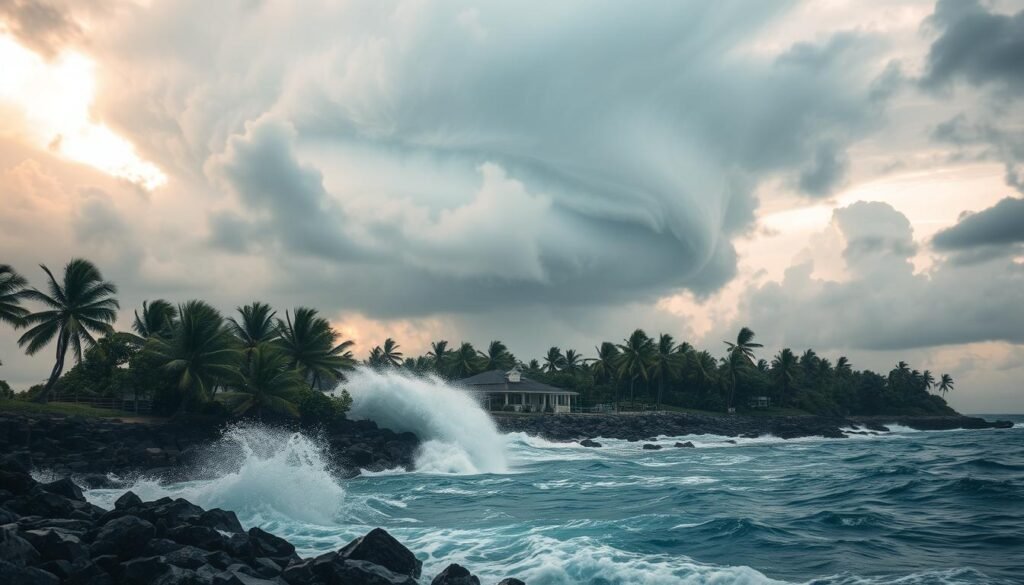
Knowing the season runs June through November changes how I pack, book, and pace my trip. I accept that most storm activity happens August–October, so I plan with buffers and clear backup plans.
Risk, alerts, and hotel hurricane policies to keep in mind
I sign up for flight and weather alerts and check forecasts daily during these months. A few days’ notice is common, so alerts let me pivot when needed.
I read hotel hurricane policies carefully and save confirmations at home and on my phone. Many resorts offer cancellation or rebooking terms for named storms — I verify trigger details before I pay.
“Prepared travel is flexible travel: I plan early outdoor days and keep major bookings changeable.”
Why June and July can still be a sweet spot for thinner crowds
June and July often bring warm water and fewer people than late summer. That makes those months a quieter option if I want ocean time with lower crowds.
- I avoid nonrefundable tours and favor accommodations with change windows.
- I add an extra day buffer for flights and book big outdoor activities early in the trip.
- I consider travel insurance that covers weather disruptions and note claim triggers and timelines.
| Item | What I do | Why it matters |
|---|---|---|
| Alerts | Sign up for flight & weather updates | Gives days of notice to adjust plans |
| Hotel policy | Save written cancellation terms | Protects payments during named storms |
| Itinerary | Book flexible tours; early big days | Maximizes good-weather windows |
| Packing | Light rain shell, dry bag, copies at home | Keeps plans going through short squalls |
I also watch for short-notice deals when the forecast is friendly and keep confirmations both on my device and at home. For more on preparing for hurricane months, I check travel guidance and insurance tips at hurricane season travel tips.
Crowd levels and vibes: from holiday surges to spring break
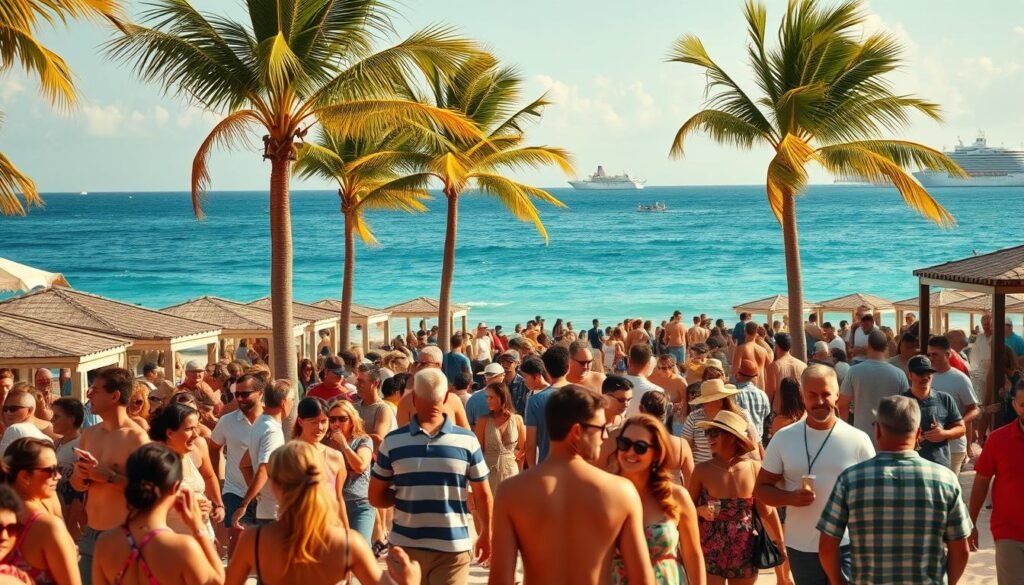
Crowds shape the mood almost as much as the weather, so I plan my days around how busy the islands feel.
The islands are busiest in winter and spring, with big spikes during holidays and the spring break window (late Feb–mid-Apr). I note Carnival on Whit Monday as another draw that brings more visitors but lively culture.
How I handle peak days: I book flights early, reserve dinners, and aim for the first boat out for snorkeling. Early beach walks and late lunches help me dodge crowds.You can learn moro about best-time-to-visit-banff
“If I want a calmer pace, I pick shoulder weeks before or after big holidays and stay away from port hotspots.”
- I choose neighborhoods slightly removed from cruise hubs for quieter evenings.
- I use flexible dining and activity times to skip peak queues.
- I find less-trafficked beaches and save headline attractions for lower-traffic days.
| Situation | When | What I do |
|---|---|---|
| Holiday surge | Dec–Mar | Book early; expect lively nights |
| Spring break | Late Feb–mid-Apr | Decide if I want party energy or quieter islands |
| Whit Monday | May/June | Enjoy culture; expect higher attendance |
| Late spring | Apr–Jul | Fewer visitors; easier days |
Prices and deals: when I find the best value
I track fare trends closely so I can spot a real value window. I look beyond room rates and weigh extras that matter on the ground.
Why it pays off: lower prices often mean smart trade-offs, like brief renovation work or limited services that I can live with for a big saving.
Airfare and resort trends: August through November savings
Most deep discounts land in the off season—August through November—when resorts push specials and carriers lower fares. October often shows sharp last-minute packages as hotels try to fill gaps.
Note: some properties renovate in fall, so I confirm core amenities before booking.
Last-minute packages and shoulder-season steals
I watch June–July and late April–June for modest fare drops and shoulder-season bargains. Those months give warmer water and fewer visitors without the lowest prices of fall.
- I target August–November for the biggest savings on flights and resorts.
- I scan October for last-minute packages and bonus inclusions.
- I compare total trip costs—transfers, resort fees, tours, and meals—not just room rates.
- I subscribe to fare alerts and flash-sale newsletters so offers pop into my inbox at home.
- I shift my planned time visit by a few days when cheap calendars appear.
“A small date tweak or an added resort credit can turn a good price into a great deal.”
Bottom line: I hold flexible dates and a tiny weather buffer so I can pounce on deals and protect my vacation value.
Activities by season: beach time, diving, and watersports
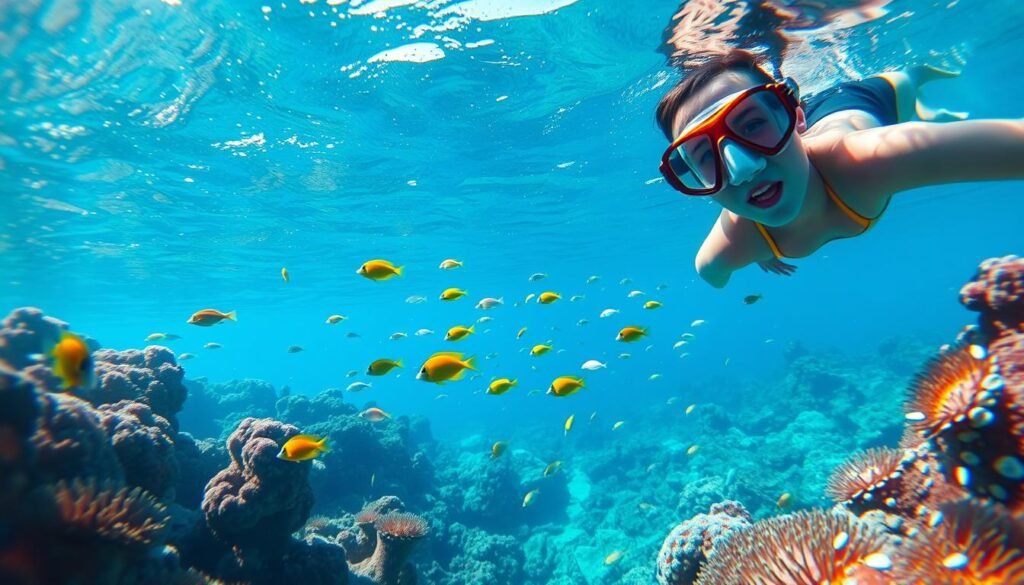
I plan watery days around light winds and early-morning calm so my snorkeling and diving feel effortless. The sea here stays warm year-round and visibility can top 200 feet, which makes dawn hours special for reef work.
Best water clarity windows for snorkeling and scuba
I pick calm, clear mornings when the sea is glassy and reef colors sing. Those hours also help me log cleaner photos and longer dives.
Pro tip: schedule major water activity early in your trip so bad weather later doesn’t cancel your must-do days.
Shark diving timing and winter wetsuit tips
Shark diving peaks November–May. I pack a shorty or 3mm suit for winter days when water sits near 72–75°F.
For quieter dive boats I often travel June–October, when sites see fewer crowds and more relaxed bottom time.
- I plan beach days around light winds and tide charts for smooth entries and easy swims.
- I match activities to weather: kitesurf on breezy afternoons and paddleboard when the sea is calm.
- I bring reef-safe sunscreen, a rash guard, a dry bag, and a microfiber towel to stay comfortable all day.
- I keep a short backup list—museums, rum tastings, and food tours—for windy or rainy spells.
“I split my itinerary between adventure and lounge days so I never feel rushed.”
| Activity | Ideal window | Why I choose it |
|---|---|---|
| Snorkeling / Scuba | Calm mornings year-round | Best visibility; up to 200 ft on calm days |
| Shark diving | Nov–May | Peak encounters; bring 3mm/shorty in winter |
| Quieter dive trips | Jun–Oct | Fewer boats; relaxed bottom time |
| Watersports (kitesurf, paddle) | Afternoons vary by wind | Match sport to wind or calm sea |
For more planning detail and travel windows, I refer readers to this handy guide on ideal travel windows.
Fishing calendar: when I target wahoo, tuna, and mahi-mahi
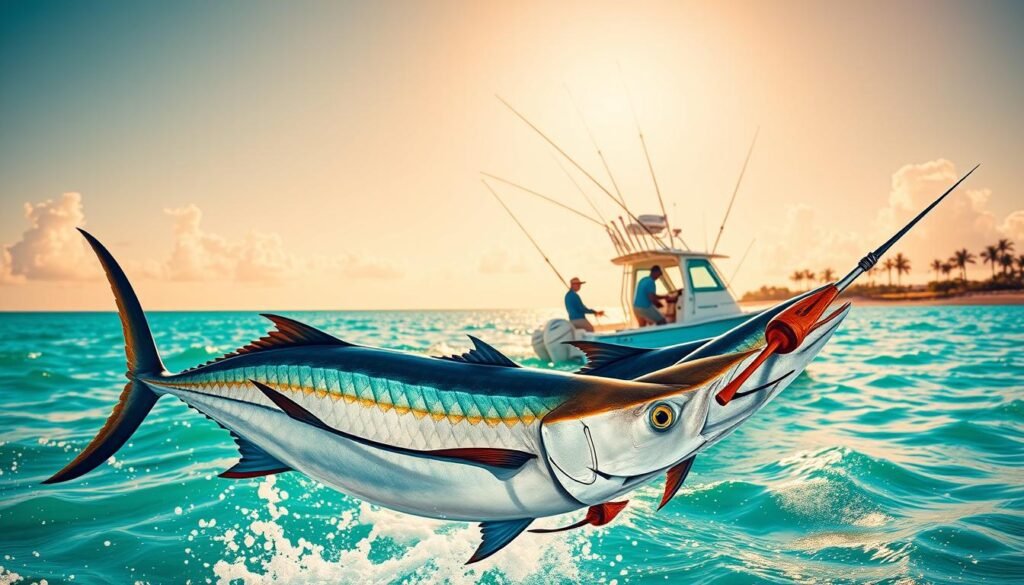
I schedule charters by species windows so each day at sea has purpose.
I plan around clear seasonal runs that shape my gear, captain choice, and departure hour.
December–March: fast wahoo runs
Why I go then: I book a winter charter for fast trolling and long runs. Those months bring steady wahoo action, and I keep my dawn departures for calmer seas and better bites.
April: sailfish and dolphinfish (mahi-mahi)
April is my spring shot at sailfish and mahi. I match lighter tackle for fast pelagics and ask captains about current edges where mahi gather.You can learn moro about best-time-to-visit-seattle
June–July: blackfin tuna
June and July give me blackfin windows. I often pair a morning offshore troll with an afternoon reef snorkel for a full travel day that balances fishing and shore time.
- I choose captains who track currents and temperature breaks that concentrate fish.
- I match tackle to species and confirm catch-and-release norms and local regs.
- I book early, plan a dawn start, and pad my schedule by a day for weather shifts.
- I confirm what’s included on board—licenses, bait, and beverages—so I arrive ready to reel.
- I have a cooler plan and check my hotel’s rules on storing or cooking any keepers.
“Treat the fishing season as a moving target influenced by conditions; flexibility wins more bites.”
For extra seasonal reading I check detailed guides on regional patterns and seasonal patterns that help me refine trip plans and travel gear choices.
Islands to prioritize by time of year
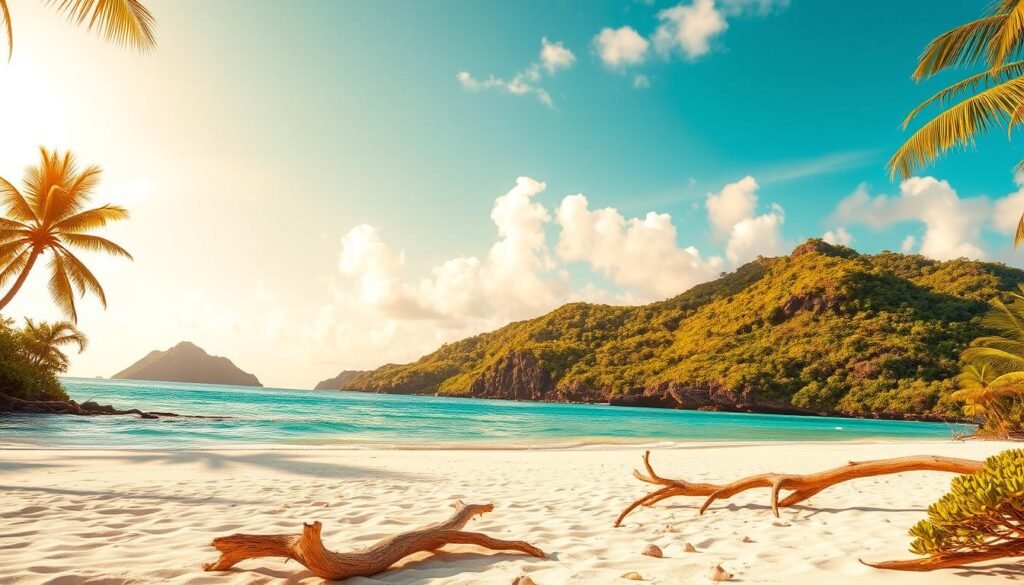
I narrow my island choices by matching the month with what I want from each shore.
New Providence (Nassau / Paradise Island)
I lean into New Providence during high season for frequent flights, lively dining, and marquee events like Junkanoo. I often use Nassau as a convenient home base for first-timers.
From there I pick easy day trips and a wide range of hotels that suit most budgets.
Grand Bahama
I love Grand Bahama for quick cruise access and a calmer shoulder-season feel. Nature tours and quiet coves make it simple to slow down.You can learn moro about best-places-to-visit-in-colorado
Exumas and Eleuthera
I aim for the Exumas in spring when warm waters and sandbars glow. That season is perfect for boating and the famed swimming-pig stops.
I pair Eleuthera with Harbour Island when I want pink-sand beaches and a gentler rhythm on the shore.
“I plan island hops when I have extra days so I can see more beaches without rushing.”
- I check island event calendars: regattas in April and local festivals can shape bookings.
- I consider the Abacos, Long Island, and San Salvador for niche interests and fewer crowds.
- I balance ferry and short-flight logistics with how much time I want on each island.
| Island | Ideal season | Why I pick it |
|---|---|---|
| New Providence | Dec–Apr | Events, flights, first-time home base |
| Grand Bahama | Apr–Jul | Calmer shoulder season, nature tours |
| Exumas / Eleuthera | Apr–May | Warm waters, iconic beaches, boating |
Quick note: I watch calendars and plan inter-island hops only when my travel window gives me slack. That way I enjoy more islands and less rush on each stop.
best time to visit bahamas for cruises: ports, durations, and seasons
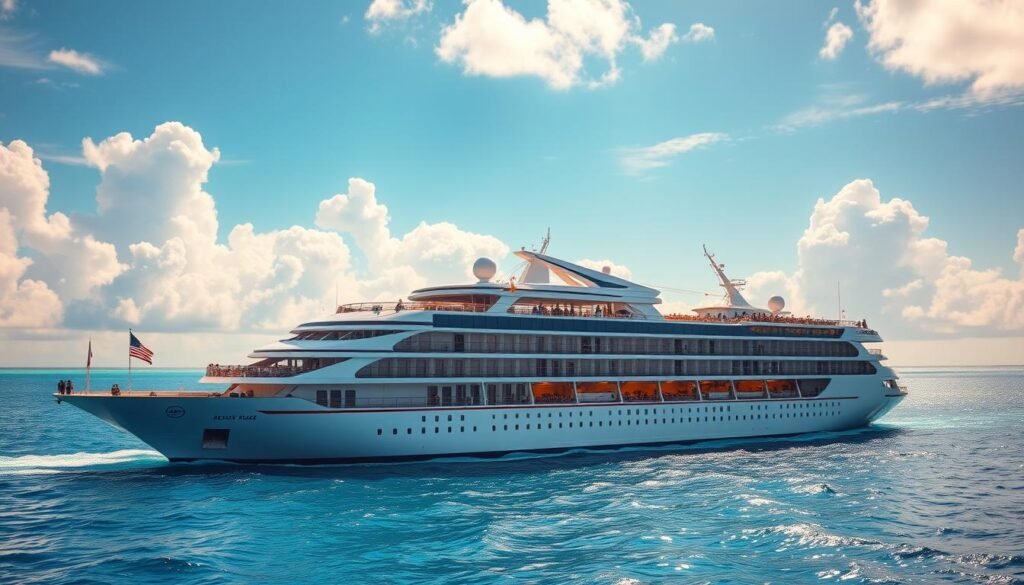
Choosing a port often decides whether I get a quick reset or a full island circuit.
Florida departures (Miami, Fort Lauderdale, Tampa, Port Canaveral)
I pick Florida ports when I want easy access and many itinerary choices. South Florida often runs short 3–4 day sailings that make a fast weekend escape simple.
Northeast and Gulf options (Cape Liberty, Baltimore, Galveston)
Cape Liberty and Baltimore work well if I want a big-city start and a longer flight home rhythm. Galveston gives Gulf flavor and strong pre-cruise food and history options.
Short breaks vs. week-long itineraries and island combos
Short sailings give one or two port days and a tidy reset. Week-long voyages let me sample New Providence, Grand Bahama, and quieter cays without rushing.
What I watch:
- I compare shoulder-season sailings for value and space versus high-season buzz.
- I study port times so I can hit must-do beaches or reefs without rushing the day.
- I choose lines with clear hurricane-season rebooking policies for peace of mind.
- I use a cruise as a sampler, then plan a land return if an island calls for more time.
| Departure Region | Common Length | Why I choose it |
|---|---|---|
| Florida (Miami, FLL, Tampa, Port Canaveral) | 3–7 days | Many short options; easy drive or short flight |
| Northeast (Cape Liberty, Baltimore) | 7+ days | Longer itineraries; city sightseeing before sail |
| Gulf (Galveston) | 5–7 days | Regional flavor; good for Texas-based travelers |
“I set total travel time—home to port and embarkation windows—so the first day stays stress-free.”
Can’t-miss events that can shape the “ideal time”
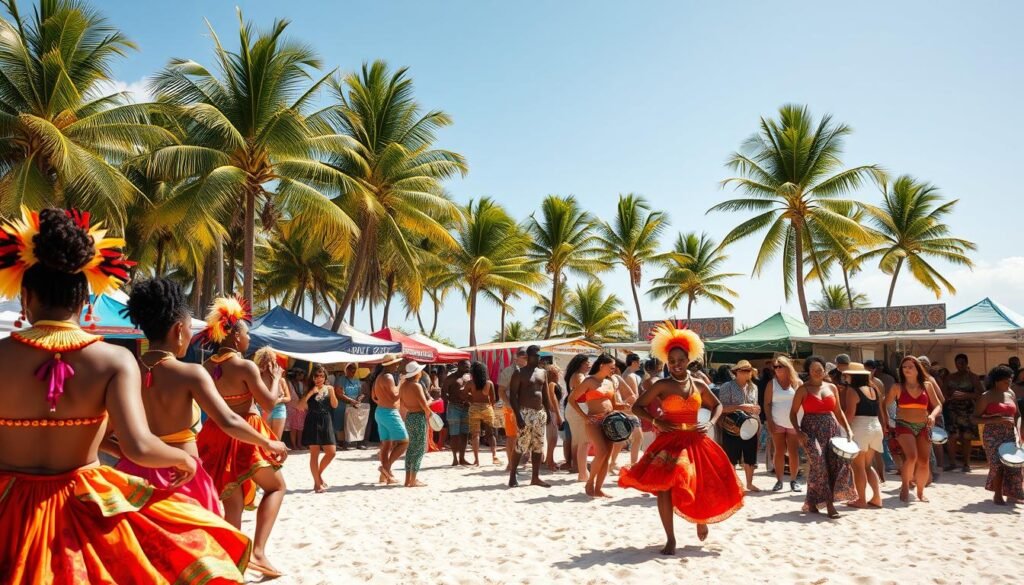
Event calendars help me match my goals with the island energy I want.
Junkanoo lights up late December and New Year with parades, music, and color. I time a December or New Year trip when I want that cultural rush.
Spring regattas and fishing bring big action in April–June. The Family Island Regatta in George Town and the Bahama Mama Billfish Classic are prime draws.
- I slot late April–June for headline fishing tournaments and competitive angling activity.
- I celebrate July 10 for Independence Week—parades, fireworks, and island pride.
- I savor October food festivals and late-November music events for milder days and lively nights.
- I book early for event months since rooms near venues and prime beaches fill fast.
“I balance festival nights with quiet beach days and plan inter-island transport when events span locations.”
| Event | Months | Where / Why |
|---|---|---|
| Junkanoo | Dec–Jan | Parades, music, holiday culture in Nassau |
| Family Island Regatta | April | George Town, Exumas — traditional sloop racing |
| Billfish Classics | Apr–Jun | Grand Bahama & region — competitive fishing |
| Seafood & Music Festivals | Oct–Nov | Food, live shows, and cooler evenings near beaches |
Month-by-month guide: what I expect through the year
Each month brings a clear mood, and I use a short checklist to match it with my vacation goals. Below I outline what I expect in each window and how I plan around weather, crowds, and deals.
December–January
What I expect: dry, sunny days and a festive energy. December averages about 6.9 hours of sunshine per day.
I pack a light layer for cool evenings and book key tours early since crowds peak.
February–March
These months bring mild weather and spring break buzz. I reserve dinners and must-do activities ahead of time.
April–May
April can reach ~9.2 hours of sun per day. I enjoy balanced weather, warm water, and fewer lines.
June–July
Early hurricane season starts in June. I still find warm seas and lighter crowds, so I keep plans flexible and refundable.
August–October
This is where I hunt prices. More rain and storm risk appear, so I favor refundable bookings and watch forecasts closely.
November
November feels like a pivot: rising sunshine, lower rates, and a calmer pace before the holidays.
“I match each window to goals—value, vibe, or a specific activity—so every month can work if planned right.”
| Months | What I expect | How I plan |
|---|---|---|
| Dec–Jan | Sunny, festive | Book early; pack a light layer |
| Feb–Mar | Mild, busy | Reserve tours and dining |
| Apr–May | Balanced, sunny | Full beach days; fewer lines |
| Jun–Jul | Warm water, lighter crowds | Flexible bookings; early outdoor days |
| Aug–Oct | Lower prices, more rain | Refundable options; monitor forecasts |
| Nov | Shoulder-low pivot | Value and rising sun hours |
Packing and planning tips for every season
I pack with a short checklist so weather surprises don’t ruin a single beach day.
I keep mind of a few essentials that fit every season and travel style. A light rain shell and quick-dry layers handle brief showers and breezy ferry rides.
Sun and sea gear: reef-safe sunscreen, a rash guard, and a wide-brim hat protect long beach stints. For winter water near 72–75°F, I pack a shorty wetsuit for longer swims.
Travel documents and flexibility
I save travel documents at home and on my phone, including insurance and hotel hurricane policies. I pick flexible rates and read change windows carefully, especially during June–November hurricane season.
- I keep medication, dry bags, and a waterproof phone pouch for boat days.
- I pack insect repellent and after-sun care so small hassles don’t cut short my days.
- I set realistic daily plans: one headline activity plus relaxed downtime.
“The ideal time is the one I plan for—prepped gear, smart bookings, and a calm, flexible mind.”
Conclusion
Conclusion
I wrap this guide by saying the right time depends on what you want from your trip. High season (Dec–mid-Apr) gives great weather, festivals, and crisp winter sun, but it brings more tourists and higher prices.
Shoulder months (late Apr–Jul) balance warm waters, fewer crowds, and solid diving windows. Low season (Aug–Nov) offers deals if you stay flexible and watch forecasts.
I match activities—shark diving, fishing runs, or a short cruise—from the months that suit each plan. If logistics matter, I often start in New Providence and return for a longer stay on Grand Bahama.
Bottom line: pick the season that fits your vibe, keep plans flexible for brief rain, and you’ll enjoy sun, sea, and peaceful beaches on every island. When I visit bahamas, that mix makes each vacation feel like home.


